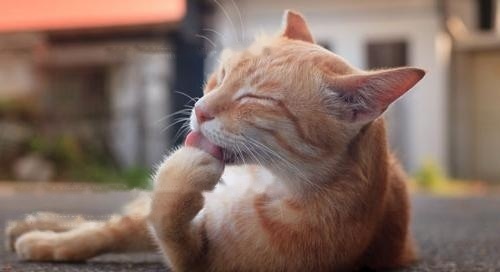I often hear from cat friends that their kittens have acne. Many times we will ignore it, thinking that it is a small matter, but after a period of time, some people's cats will appear Some scary symptoms look very ugly. In fact, cat acne is very easy to treat. Xiaomian will explain the treatment of cat acne!

Acne is a common skin disease in cats. It is often caused by keratinization of follicles and glandular hyperplasia. It is more common on the chin, lower lip, and occasionally on the upper lip. The usual age of onset is 6 to 14 years (median age 4), not just adolescence. Some cats appear only at a certain age, while others appear periodically or persist. In the early stage, it may be just acne, and some only stay in the acne stage; while others will develop into papules and pustules; in severe cases, the chin will become red and thickened, and folliculitis and boils will appear, accompanied by bacterial infection. Cats often scratch and rub their jaws on furniture.
The etiology is unclear, but studies have been linked to immunosuppression, stress, lack of grooming habits in cats, potential seborrheic tendencies (so-called constitutional problems), abnormal sebum, and abnormal hair regrowth.
1. Appropriate amount of systemic antibiotics for at least 2-3 weeks to treat any secondary bacterial infection.
2. Trim the damaged hair, apply warm water and hot compress, wash with human acne pad or benzoyl peroxide, sulfur salicylic acid or ethyl lactate-containing shampoo, every 1- Once every 2 days until recovery. Follow up with maintenance therapy as needed.
3. Topical medications that are effective and used once every 1-3 days or as needed to maintain control include: mupirocin ointment or cream, 2.5% benzoyl peroxide, 0.01-0.025 % tretinoin cream or lotion, 0.75% metronidazole cream, topical medication containing clindamycin, erythromycin or tetracycline.
4. For intractable cases, systemic application of isotretinoin may be effective. 2mg/kg or 10mg once, PO, 24 hours apart, until recovery (close to 30 days), then maintain control as needed, the same dose, 2-3 days apart.
5. After curing, lifelong symptomatic treatment is necessary to control, because after the symptoms disappear, the drug can be gradually stopped, and some cats may relapse. . The disease is cosmetic only and does not affect the quality of life of animals unless secondary infection occurs.
![[Dog Training 5] The training method of pet dog dining etiquette](/static/img/12192/12192_1.jpg)




